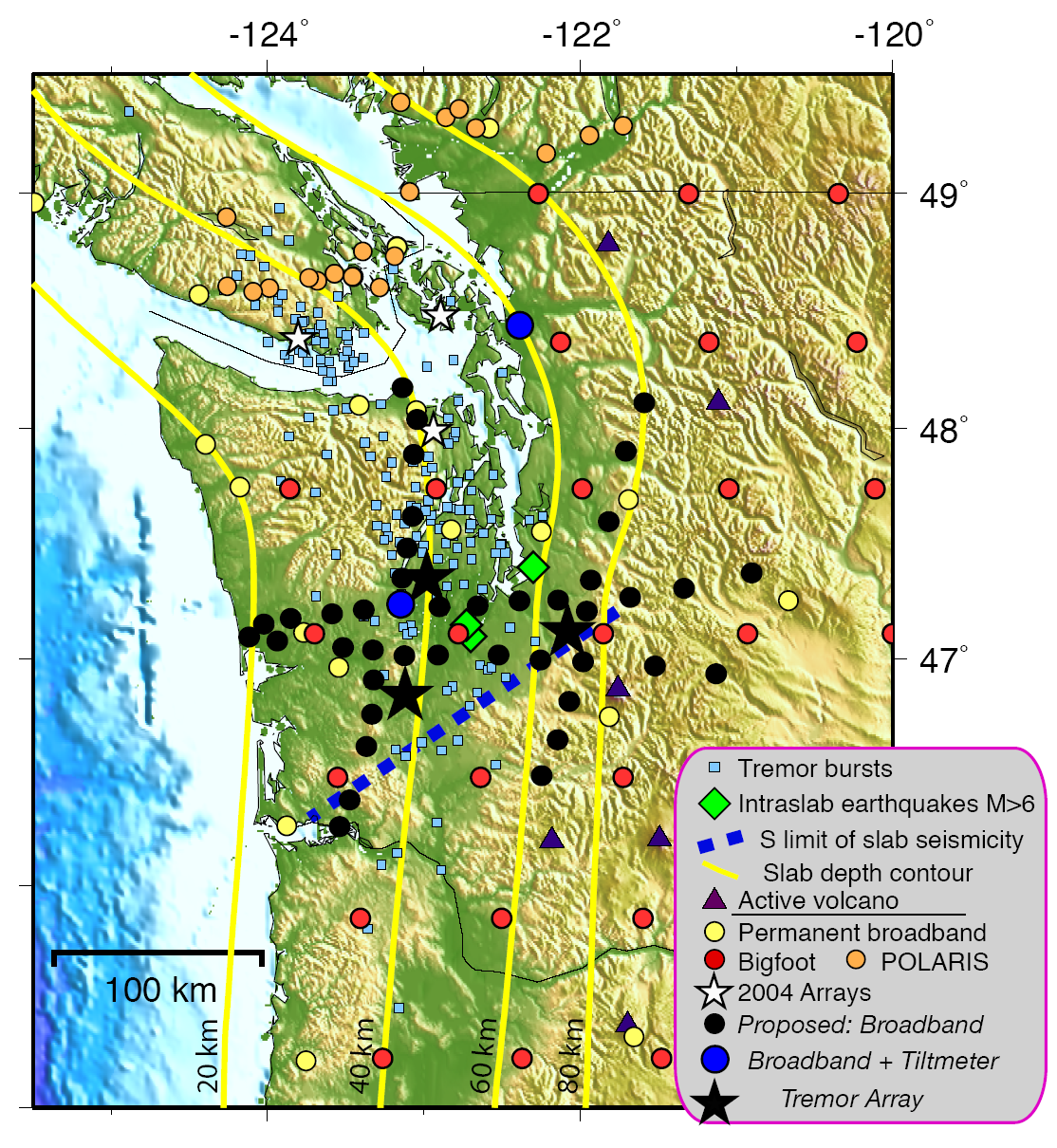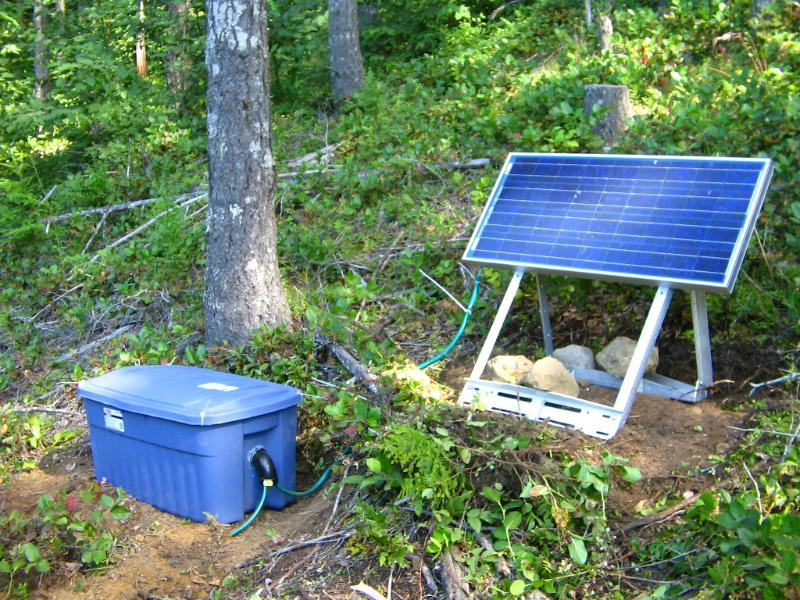
CAFE Cascadia Arrays for Earthscope
During the summer of 2006 teams of seismologists deployed a network of 60 seismometers that cover much of western Washington. This is part of a 3-year scientific study aimed at understanding how the Cascadia subduction system works. In essence, this network would allow seismologists to monitor seismic activity through out the state and provide data for questions regarding earthquakes, volcanic tremor, and non-volcanic tremor.
A frequently updated log of efforts and observations related to ETS activity is being kept.
Why are they doing this? Water is thought to play a critical role in the subduction process. Water is locked in minerals and carried down with the subducting plate. As pressure and temperature increase the water is released from these minerals. This water lubricates faults and allows earthquakes, like the 2001 Nisqually earthquake to occur. It also plays a central role in the volcanic processes responsible for the Cascade volcanoes such as Mt Rainier and Mt. St Helens.

Map of western Washington showing approximate locations of seismometers deployed for this experiment (black circles), seismometer arrays (stars), large earthquakes (diamonds), and volcanoes (triangles).
What does the network do? Portable seismic monitoring systems are capable of detecting extremely small movements of the earth generated by large earthquakes throughout our planet, by small earthquakes in Washington. Sophisticated data processing algorithms are applied to the seismic data to obtain three-dimensional images under Western Washington to depths of 50 miles. These images are interpreted to understand the subduction process. In addition, the seismometers are used to monitor the recently discovered subtle vibrations of the earth lasting minutes to hours. Episodes of this deep tremor occur beneath the Olympic Peninsula occur every 14 months and last for 2-3 weeks; the next one will likely occur in November, 2006. Tremor activity is typically accompanied by very slow slip on a fault 20-30 miles deep that is detected using Global Positioning Systems.
The seismic stations will be installed in July, 2006 and remain in place for about 2 years. They will record ground motion continuously during that time. Instruments will be checked and the data collected every six weeks during the time they are in the ground.
Field Installations Seismic sensors record ground motion on data-loggers which stores the information on flash cards. Hence there is a data acquisition portion, and a data storage portion of a typical seismic station, which requires power. If there is plenty of sunlight, a large battery and solar panels likely will be enough to keep them powered for several weeks.


Installed Seismic Station The seismometer is buried in the ground to ensure good coupling with the Earth. The solar panels collect energy for the data acquisition and recording along with batteries.
When installing stations, we generally look for locations (1) that are safe on private land, where there is little cultural noise, available power, and near bedrock, or (2) for sites where the seismometer can be placed directly on bedrock, preferably with about 3 feet of soil cover, and where there is little danger of flooding or groundwater infiltration. It is important that the whole vault assembly be watertight. To prevent vandalism, we select sites that are invisible to traffic and hikers. The stations are service every 6-8 weeks in order to download full memory disks to keep collecting data. The data are then archived for analysis.
Information
If you would like more information on this project, or if you have a CAFE project station on your property and have any questions, contact: Ken Creager <kcc.ess.washington.edu>.